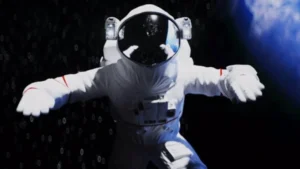Space Health Challenges
Space Travel has been practiced by research studies and projects that aim to help solve human exploration in space. Space travel has several challenges which cuts across health. Therefore, understanding the risks and finding solutions is crucial to space travel.
Bones
The bones in the lower section of the body do less work because they do not need to carry the load of Earth’s gravity. With the decrease in load-bearing outcomes in the human body, bones lose their density. Thus, the body increases the mineral concentration in another part of the human body. The process leads to more problems like increased urinary calcium and renal stones.

Muscles
Researchers experience reduced muscle strength, mass and endurance because moving around requires decreased work from the legs. Therefore, the muscles can begin to weaken and help combat the astronauts around the international space station. However, muscles are a poor state can lead to fall-connected injuries upon the return to earth.
Neurological
Your body will necessitate some time to get used to microgravity. The human brain has a complex integrated set of neural circuits that enable humans to have balance, vision and position the location and direction. However, lacking gravity the information inputs from the muscles and internal organs are different from what is anticipated.
Eyes

The eyes experience their own set of changes when out of earth’s atmosphere. The changes comprise of increased globe flattening, vision changes and optic disc oedema. The main problem identified in space is the Space-Associate Neuro-ocular Syndrome (SANS). The problem causes swelling in the back of the eye.
Cardiovascular
In space, the researchers may experience reduced volumes of blood, aerobic capacity and orthostatic tolerance. The cardiovascular system functions well in space and the body does not require much work from the heart in microgravity. Therefore, this could cause a deconditioning and decrease in the size of the heart.
Space Radiation
The environment of Earth protects humans from harmful space radiation. The Low Earth Orbit (LEO) space radiation causes a significant risk to the explorers. The astronauts can experience radiation, central nervous outcomes, risks of cancer, degenerative diseases and increased degenerative diseases. Besides, the process has been practiced by research studies and projects that aim to help solve human exploration in space. Space travel has several challenges which cuts across health. Therefore, understanding the risks and finding solutions is crucial to space travel.
Bones
The bones in the lower section of the body do less work because they do not need to carry the load of Earth’s gravity. With the decrease in load-bearing outcomes in the human body, bones lose their density. Thus, the body increases the mineral concentration in another part of the human body. The process leads to more problems like increased urinary calcium and renal stones.
Muscles
Researchers experience reduced muscle strength, mass and endurance because moving around requires decreased work from the legs. Therefore, the muscles can begin to weaken and help combat the astronauts around the international space station. However, muscles are a poor state can lead to fall-connected injuries upon the return to earth.
Space Neurological
Your body will necessitate some time to get used to microgravity. The human brain has a complex integrated set of neural circuits that enable humans to have balance, vision and position the location and direction. However, lacking gravity the information inputs from the muscles and internal organs are different from what is anticipated.

Eyes
The eyes experience their own set of changes when out of earth’s atmosphere. The changes comprise of increased globe flattening, vision changes and optic disc oedema. The main problem identified in space is the Space-Associate Neuro-ocular Syndrome (SANS). Furthermore, the problem causes swelling in the back of the eye.
Space Cardiovascular
In space, the researchers may experience reduced volumes of blood, aerobic capacity and orthostatic tolerance. The cardiovascular system functions well in space and the body does not require much work from the heart in microgravity. Therefore, this could cause a deconditioning and decrease in the size of the heart.
Space Radiation
The environment of Earth protects humans from harmful space radiation. The Low Earth Orbit (LEO) space radiation causes a significant risk to the explorers. The astronauts can experience radiation, central nervous outcomes, risks of cancer, degenerative diseases and increased degenerative diseases.
WRITTEN BY: AMEDICC.COM
PHOTO CREDIT: GOOGLE.COM
